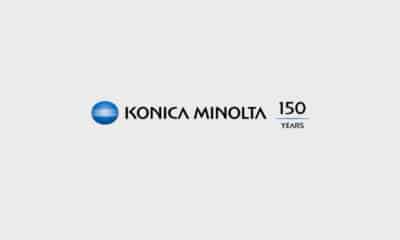Business + Management: Marty Mcghie
Energy Efficiency: A Closer Look at Textile Printing
PSPs must consider the weight of pre- and postpress treatments.
Printvinyl Scored Print Media
New Printvinyl Scored wide-format print media features an easy-to-remove scored liner for creating decals, product stickers, packaging labels, and more. The precision-scored liner, with a 1.25” spacing on a 60” roll, guarantees a seamless and hassle-free removal process.
-

 Blue Print4 weeks ago
Blue Print4 weeks agoThis Wide-Format Pro Started at Age 11, and 32 Years Later, Still Loves What He’s Doing
-

 Buzz Session4 weeks ago
Buzz Session4 weeks agoWide-Format Printers Share Their Thoughts on Business-Advice Books
-

 Beyond Décor: Rachel Nunziata2 weeks ago
Beyond Décor: Rachel Nunziata2 weeks ago3 Things Print Pros Must Do to Build Stronger Relationships in the Interiors Market
-

 Press Releases2 months ago
Press Releases2 months agoCanon USA Unveils Enhanced PRISMA Home v1.5 Cloud Portal
-

 Press Releases1 month ago
Press Releases1 month agoKornit Digital Reveals New Opportunities With Robust Showcase at FESPA Digital Print Expo 2024
-

 Press Releases2 months ago
Press Releases2 months agoKonica Minolta Celebrates International Women’s Day 2024
-

 Press Releases2 months ago
Press Releases2 months agoBrother Enters Wide Format Latex Segment With Latest Launch
-

 Press Releases1 month ago
Press Releases1 month agoDrytac Set For Expansive Solutions Showcase at ISA Sign Expo 2024














